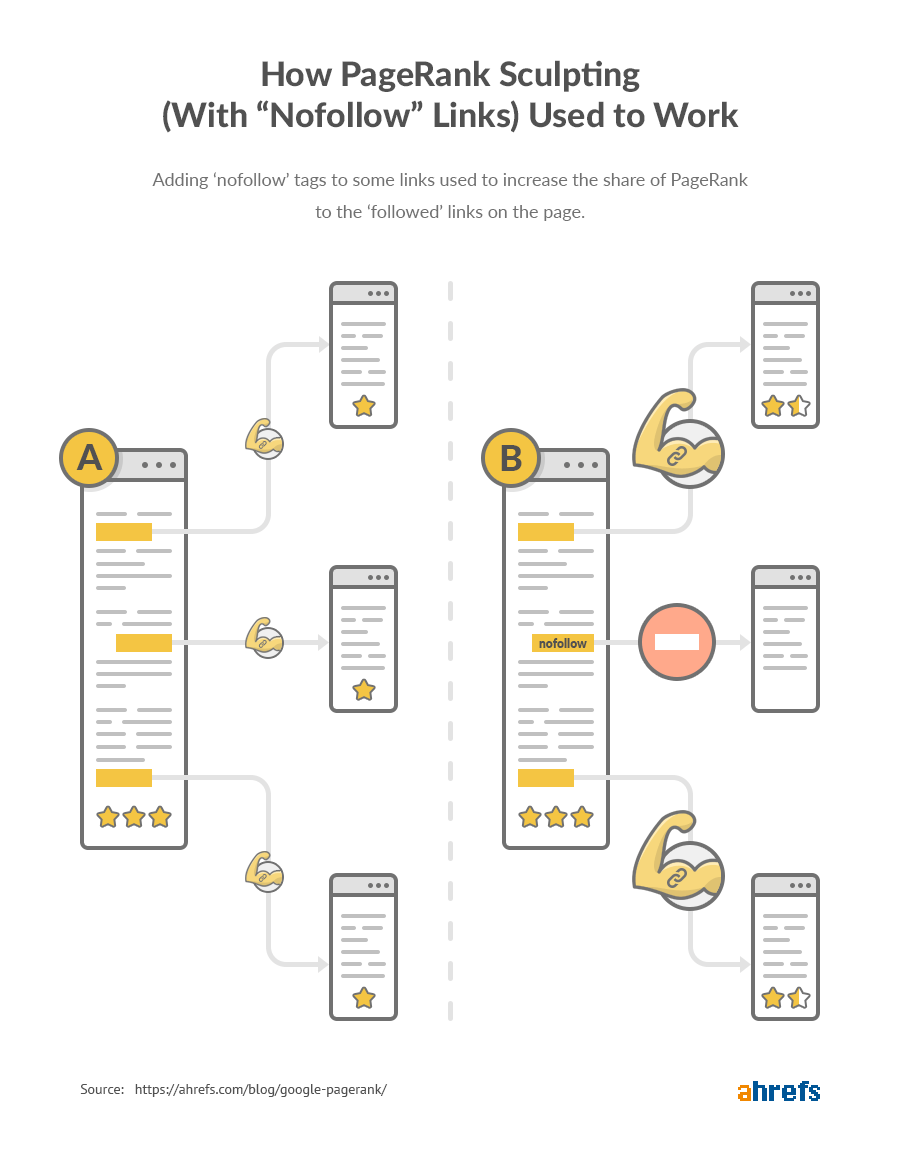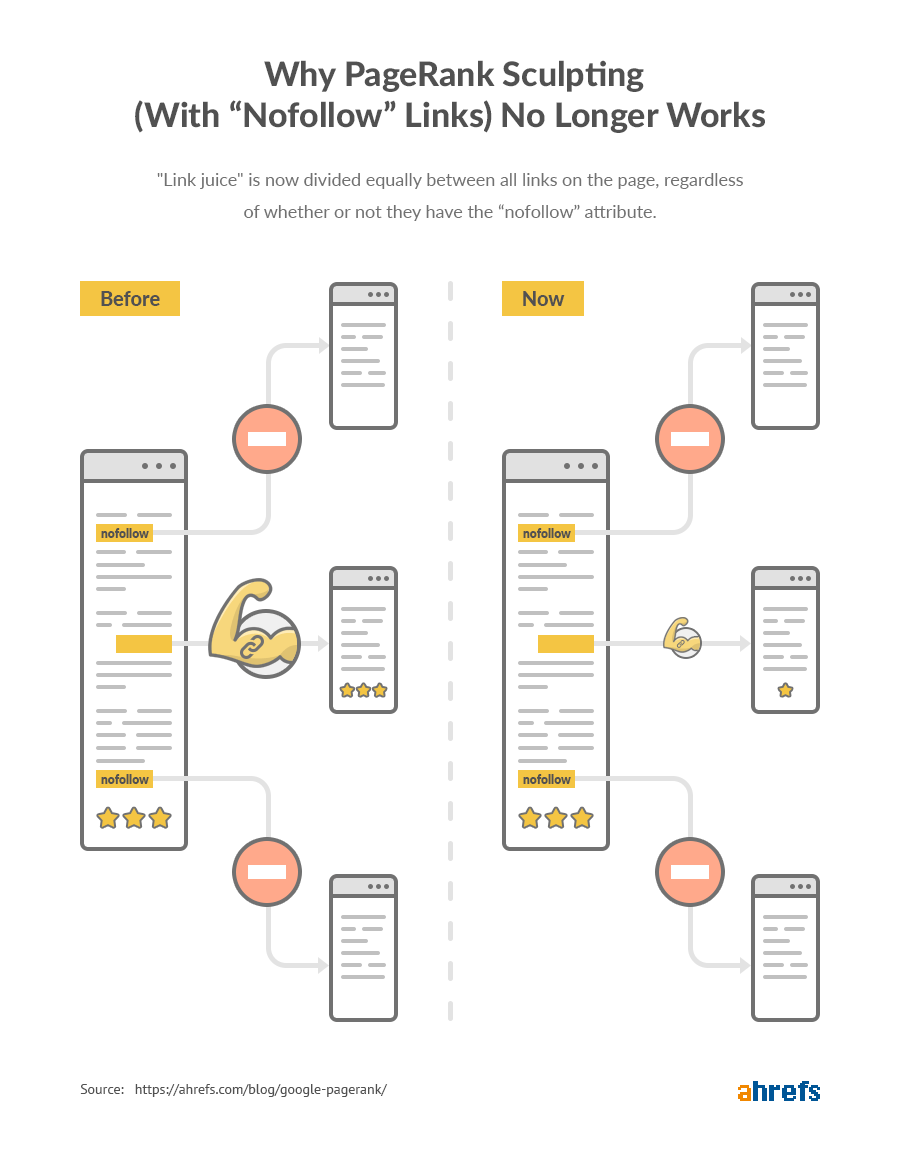The history of "nofollow"
Google first proposed nofollow in 2005, in order to combat external links to spam.
If you are a blogger (or blog reader), you will be very familiar with the content that leaves the "visit my discount drug website" link in the message box. The purpose of these links is to improve their website search engine rankings. This is the so-called spam, and we don’t like it either. We are always testing new tags to block it. From now on, when Google sees attributes (rel="nofollow") on hyperlinks , these links will not receive any credit . This is not to say that all comment links are not trusted. This is just a way to ensure that spammers will not abuse public areas such as blog comments, citations, and referral lists.
Soon after, Yahoo , Bing and some other search engines also announced their commitment to the nofollow label.
2009: Google combats PageRank sculpting
PageRank flows around a website via internal links (links from one page on the site to another).
For example, some of this article’s PageRank flows to the other pages on our site via hyperlinks like this one. In general, higher PageRank equates to higher rankings. Gary Illyses confirmed this last year.
However, PageRank only gets transferred via followed links, not nofollowed links.
That’s always been the case, but the way PageRank gets shared between the followed links on a page has changed over the years.
Before 2009, it worked like this:
If you had three links on a page and one of them was nofollowed, then the total PageRank was split between the two followed links.

Unfortunately, some people started taking advantage of this technicality to manipulate rankings by sculpting the flow of PageRank around their sites.
In other words, they’d nofollow links to their unimportant pages to allow for the maximum transference of PageRank to their “money” pages.
Google announced changes to nip this practice in the bud in 2009:
So what happens when you have a page with “ten PageRank points” and ten outgoing links, and five of those links are nofollowed? […] Originally, the five links without nofollow would have flowed two points of PageRank each […] More than a year ago, Google changed how the PageRank flows so that the five links without nofollow would flow one point of PageRank each.
Here’s an illustration of the before and after:

While PageRank sculpting is no longer a thing, “nofollowing” some internal links can help with crawl prioritization because Google doesn’t crawl nofollow links.
Search engine robots can’t sign in or register as a member on your forum, so there’s no reason to invite Googlebot to follow “register here” or “sign in” links. Using nofollow on these links enables Googlebot to crawl other pages you’d prefer to see in Google’s index.
However, this is a somewhat advanced topic, so I won’t go any deeper into that here.
Recommended reading: Crawl budget for SEO: the ultimate reference guide
2013 onwards: Google combats paid links
Google classes the buying or selling links that pass PageRank as a violation of their Webmaster Guidelines.
As such, all paid links should be nofollowed.
That’s been the case for many years, even long before 2013.
However, from what I can see, Google became increasingly concerned about the effect of undisclosed paid links on their algorithm around this time… and has been ever since.
ut to summarize: Google wants to reward earned links, not paid links.
People treat links as editorial votes. They link to something because it inspires passion in them. It’s something that’s interesting. They want to share it with friends. There’s some reason why they want to highlight that particular link.
The problem is that some paid links look no different from earned links. Think about the difference between a link in a paid review vs. a link in an unpaid review.
On the face of it, both links will look identical. That’s why there needs to be a way to disclose the paid one to Google.
Think of it like this: There are two ways to get an Oscar:
Option #1: Live to act, continuously hone your craft, and work hard for years.
Option #2: Buy 6 of them for $8.97 on Amazon…
The nofollow tag (on paid links) is to Google what the $8.97 sticker on the bottom of your fake Oscar is to your friends: a tell-tale sign that you didn’t earn this legitimately and thus, don’t deserve credit for your tomfoolery manipulative efforts.
This article is from: https://ahrefs.com/blog/nofollow-links/

Post a Comment
0 Comments